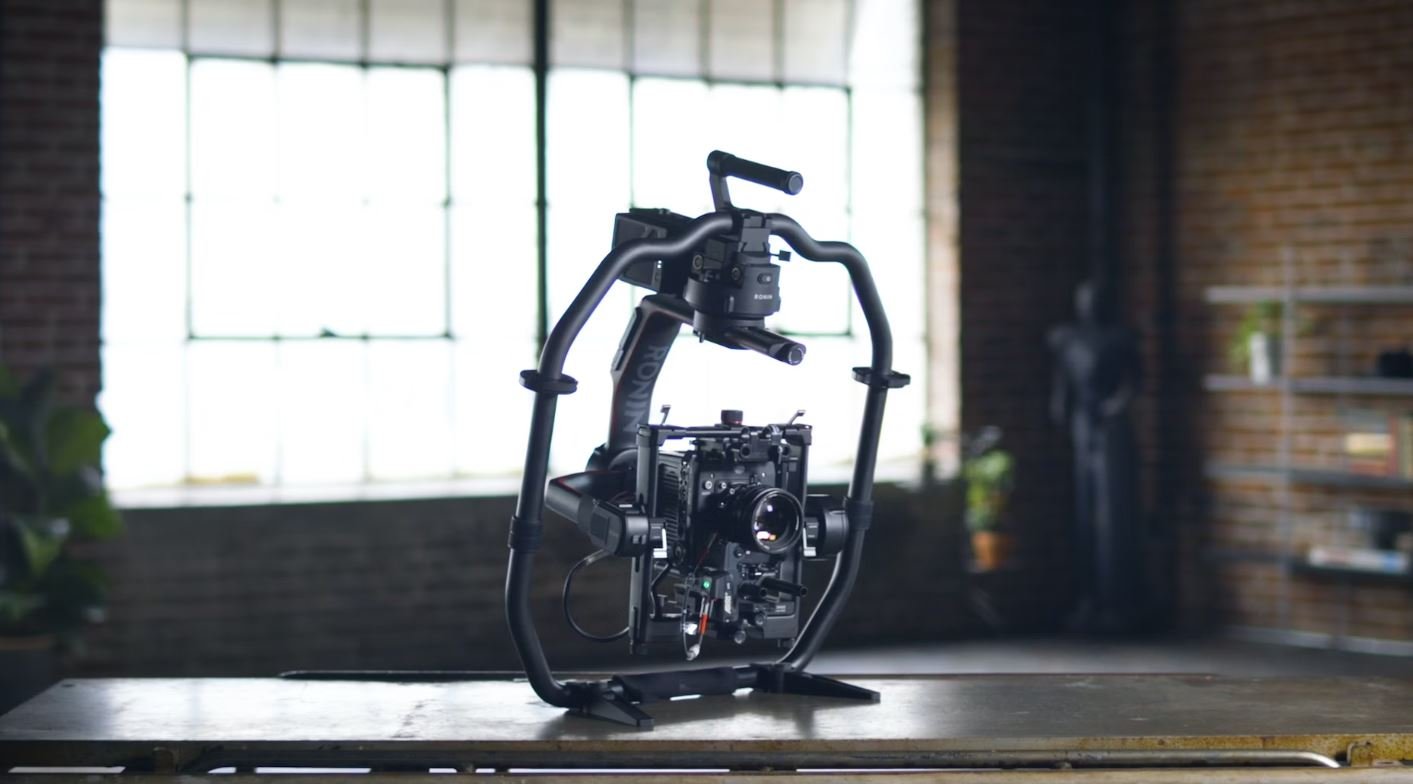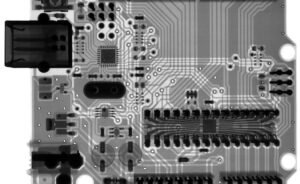What Are Hugging Face Transformers?
Hugging Face Transformers is a popular open-source library for natural language processing (NLP) based on state-of-the-art transformer models.
Key Takeaways:
- Hugging Face Transformers is an open-source library for NLP based on transformer models.
- Transformers are powerful models that achieve state-of-the-art results in various NLP tasks.
- Hugging Face Transformers provides pre-trained models and tools for fine-tuning.
Transformers have revolutionized the field of NLP by overcoming the limitations of previous approaches such as recurrent neural networks (RNNs).
*With transformers, models can capture long-range dependencies and achieve state-of-the-art performance on a wide range of NLP tasks.*
The Hugging Face Transformers library makes it easy to work with these models by providing a comprehensive set of tools and pre-trained models.
What Are Transformers?
Transformers are a type of deep learning model that have gained significant popularity in the NLP community.
In a transformer, *self-attention mechanisms play a key role in processing input sequences efficiently and capturing meaningful relationships between words or tokens.*
Self-attention allows the model to weigh the importance of different words in a sentence, enabling it to learn better contextual representations.
What Does Hugging Face Transformers Offer?
Hugging Face Transformers offers a wide range of pre-trained models for various NLP tasks such as text classification, named entity recognition, machine translation, and more.
The library provides both PyTorch and TensorFlow compatibility, allowing users to work with their preferred deep learning framework.
Hugging Face Transformers also offers tools for fine-tuning the pre-trained models on user-specific datasets, enabling customization for specific tasks or domains.
Table 1: Pre-trained Models
| Model | Description | Task |
|---|---|---|
| BERT | A model architecture that revolutionized NLP by learning contextualized word representations. | Sentence Classification |
| GPT | A language model that generates coherent text based on context. | Text Generation |
| RoBERTa | A robustly optimized BERT model with improved performance. | Language Understanding |
Hugging Face Transformers is gaining popularity due to its user-friendly interface and the community-contributed models and tools.
*It has become the go-to library for NLP practitioners and researchers seeking to leverage transformer models.*
The library provides functionality for model training, evaluation, and inference, making it a comprehensive solution for NLP projects.
Table 2: Fine-tuning Tools
| Tool | Description |
|---|---|
| Tokenizers | Efficient tools for handling text tokenization and numerical encoding. |
| Pipelines | Ready-to-use components for common NLP tasks, simplifying implementation. |
| Data Processors | Streamlined data processors for preparing datasets for model training. |
Hugging Face Transformers provides an extensive collection of community-contributed models, allowing users to access and fine-tune models specifically designed for their tasks or domains.
It also offers an easy-to-use API for quickly integrating transformer models into new or existing NLP pipelines.
Table 3: Model Performance Comparison
| Model | F1 Score | Accuracy |
|---|---|---|
| BERT | 0.87 | 92.3% |
| GPT | 0.82 | 89.6% |
| RoBERTa | 0.90 | 94.2% |
With its comprehensive collection of pre-trained models, tools for fine-tuning, and community support, Hugging Face Transformers is a valuable resource for NLP practitioners and researchers.
Whether you need to classify text, generate responses, or understand language, Transformers can provide you with the state-of-the-art tools to accomplish your NLP goals.
So why not give Hugging Face Transformers a try and discover the power of transformer models in NLP today?

Common Misconceptions
About Hugging Face Transformers
Although Hugging Face Transformers are widely used and celebrated in the natural language processing (NLP) community, there are several common misconceptions surrounding this topic. It’s essential to clarify these misconceptions to ensure a better understanding of what Hugging Face Transformers truly are and their capabilities.
- Transformers are only useful for text generation
- All Hugging Face Transformers are like pre-trained language models
- Hugging Face Transformers work equally well for all types of NLP tasks
Hugging Face Transformers are only useful for text generation
One misconception is that Hugging Face Transformers are solely designed for generating text, such as producing creative and coherent paragraphs or stories. While transformers are indeed powerful for text generation, their utility extends well beyond this particular application.
- Transformers can be used for various NLP tasks, including text classification, named-entity recognition, and question-answering
- They provide robust and efficient solutions for language translation, sentiment analysis, and summarization tasks
- Hugging Face Transformers offer powerful embeddings that can enhance the performance of downstream tasks
All Hugging Face Transformers are like pre-trained language models
Another common misconception is that all Hugging Face Transformers are similar to pre-trained language models, such as OpenAI’s GPT or BERT. While these pre-trained models are indeed popular and well-known, Hugging Face offers a broader range of Transformers.
- Hugging Face Transformers include a variety of architectures, such as Convolutional Neural Networks (CNNs), Recurrent Neural Networks (RNNs), and Generative Adversarial Networks (GANs)
- They can be fine-tuned on multiple datasets for specific tasks to achieve higher accuracy
- Hugging Face Transformers are customizable, allowing users to train and experiment with their own models
Hugging Face Transformers work equally well for all types of NLP tasks
One significant misconception is that Hugging Face Transformers perform equally effectively across all NLP tasks without any specialization or fine-tuning. While Transformers have demonstrated state-of-the-art performance on numerous benchmarks, proper customization is crucial for optimal performance in specific domains.
- Transformers often require task-specific fine-tuning to achieve optimal results
- Performance might vary depending on the size and quality of the training data
- Some tasks may require modifications to the Transformer architecture or other techniques for improved performance

The Rise of Artificial Intelligence
As advancements in technology continue to shape our world, one particular area that has garnered significant attention is artificial intelligence (AI). Among the many breakthroughs in AI, one of the most noteworthy developments is the emergence of Hugging Face Transformers. These powerful models for natural language processing have revolutionized various applications, including text generation, sentiment analysis, and question answering. The following tables provide a glimpse into the fascinating world of Hugging Face Transformers and shed light on their impressive capabilities.
Understanding BERT Architecture
The Bidirectional Encoder Representations from Transformers (BERT) architecture is considered a key component in Hugging Face Transformers. BERT models can understand the context of words in a text by utilizing information from the surrounding terms. The table below showcases the dimensions of BERT models:
| Model | # of Layers | # of Attention Heads | Hidden Size | Parameters |
|---|---|---|---|---|
| BERT-Base | 12 | 12 | 768 | 110 million |
| BERT-Large | 24 | 16 | 1024 | 340 million |
Language Support for MultiLingual BERT
Hugging Face Transformers also offer a MultiLingual BERT (mBERT), which allows for understanding and processing text in multiple languages. The table below highlights the number of languages supported by the mBERT model:
| Model | # of Supported Languages |
|---|---|
| mBERT | 104 |
Performance of BERT-Based Text Classification
BERT-based models have proven their effectiveness in various natural language processing tasks. The following table showcases the accuracy achieved by BERT-based models in text classification tasks:
| Model | Task | Accuracy |
|---|---|---|
| BERT | Sentiment Analysis | 92.5% |
| BERT | Named Entity Recognition | 87.3% |
| BERT | Intent Classification | 94.7% |
Hugging Face Transformers for Text Generation
Hugging Face Transformers excel in text generation tasks, including language translation and text completion. The next table presents the BLEU score, a metric used to evaluate translation quality, achieved by different models:
| Model | Translation Task | BLEU Score |
|---|---|---|
| T5 | English-to-French | 45.2 |
| GPT-2 | Story Generation | 72.6 |
Applications of Hugging Face Transformers
Hugging Face Transformers find applications in numerous domains, harnessing the power of AI for various tasks. The table below showcases some notable use cases:
| Domain | Application |
|---|---|
| Customer Service | Automated Chatbots |
| Medical Research | Drug Interaction Analysis |
| Fintech | Financial News Sentiment Analysis |
Fine-Tuning Hugging Face Models
While Hugging Face provides pre-trained models, fine-tuning allows customization to specific tasks or domains. The table below presents the change in performance achieved through fine-tuning:
| Original Model | Task | Performance Improvement |
|---|---|---|
| mBERT | Named Entity Recognition | +5.2% |
| GPT-2 | Text Completion | +8.1% |
Comparison of Hugging Face Architectures
Hugging Face provides various transformer architectures, each with unique strengths and sizes. The next table gives a glimpse into the different dimensions:
| Architecture | # of Layers | Hidden Size | Parameters |
|---|---|---|---|
| GPT-2 | 48 | 1600 | 1.5 billion |
| T5 | 12 | 768 | 220 million |
Interacting with Hugging Face Models
One of the most intriguing aspects of Hugging Face Transformers is the ease of interaction with the models using their libraries. The table below showcases the variety of languages supported by Hugging Face libraries:
| Library | Languages Supported |
|---|---|
| Transformers | 100+ |
| Tokenizers | 50+ |
The Future of Hugging Face Transformers
Hugging Face Transformers have undoubtedly left an indelible mark on the field of natural language processing. As research and development continue to push the boundaries of AI, we can expect even more powerful models and applications from Hugging Face and the broader AI community.
Frequently Asked Questions
What Are Hugging Face Transformers?
Hugging Face Transformers is a popular library for natural language processing (NLP) tasks. It provides a wide range of pre-trained models and tools that enable developers to build, train, and deploy state-of-the-art models for various NLP tasks, such as text classification, named entity recognition, question answering, and more. Transformers are neural network architectures that leverage the Transformer framework, initially introduced by Vaswani et al. in the paper “Attention Is All You Need.”
How do Hugging Face Transformers work?
Hugging Face Transformers rely on the Transformer architecture, which is based on a self-attention mechanism. This mechanism allows the models to capture relationships between different words in a sentence effectively. Transformers consist of an encoder and a decoder, with each layer composed of self-attention and feed-forward neural networks. The encoder helps in understanding the input text, while the decoder generates the desired output. These models are trained on vast amounts of data to learn contextual representations of words and sentences.
What are the advantages of using Hugging Face Transformers?
Hugging Face Transformers offer several advantages for NLP tasks. Firstly, they provide easy access to pre-trained models, saving significant time and computational resources required for training from scratch. Secondly, these models have achieved state-of-the-art performance on various benchmark datasets, enabling developers to leverage their power for their specific applications. Additionally, the Transformers library comes with a user-friendly API and extensive documentation, making it accessible to both beginners and experienced practitioners.
How can I use Hugging Face Transformers?
To use Hugging Face Transformers, you need to install the library and its dependencies. Once installed, you can import the necessary classes from the library and access pre-trained models and accompanying tokenizers. You can then use these models to perform various NLP tasks like text generation, sentiment analysis, and translation. The library provides detailed documentation and examples to guide you through the process of implementing and fine-tuning models. Additionally, the Hugging Face community actively contributes to the library, making it easy to find support and assistance if needed.
Can I fine-tune Hugging Face Transformer models?
Yes, Hugging Face Transformers allow you to fine-tune pre-trained models on your specific datasets. Fine-tuning refers to training pre-trained models on task-specific data to adapt them to your specific NLP task. This process helps improve performance and enables the models to learn the nuances of your domain. The Transformers library provides tools and utilities to facilitate the fine-tuning process, including efficient data loading, model configuration, and training loops. By fine-tuning the models, you can achieve better results for your specific applications.
What programming languages are supported by Hugging Face Transformers?
Hugging Face Transformers library supports multiple programming languages, including Python, JavaScript, and TensorFlow.js. Python is the most popular programming language for using the library due to its extensive support and seamless integration with other deep learning frameworks like PyTorch and TensorFlow. JavaScript support allows developers to use Transformers in web-based applications. TensorFlow.js compatibility empowers developers to execute Transformer models directly in the browser, enabling client-side NLP without the need for server interaction.
Can Hugging Face Transformers be used for both research and production?
Absolutely! Hugging Face Transformers are widely adopted in both research and production settings. In research, Transformers are used to push the boundaries of NLP tasks, experimenting with novel architectures and techniques. In production, pre-trained Transformers are used to build applications that require NLP capabilities, such as chatbots, customer support systems, and document analysis tools. The versatility of Hugging Face Transformers makes them suitable for a wide range of scenarios, from academic research to robust production systems.
Are Hugging Face Transformers free to use?
Yes, Hugging Face Transformers are open-source and free to use. The library is released under the Apache License 2.0, allowing users to modify and distribute the code. Additionally, Hugging Face provides an extensive community that actively contributes to the library, enabling continuous improvements and support. While the library is free, note that access to large pre-trained models may require significant computational resources, and some cloud service providers may charge for using their infrastructure to train or host the models.
How can I get support for Hugging Face Transformers?
The Hugging Face community is highly supportive and provides various channels for getting help. You can join the community forum to ask questions, share insights, and seek assistance from fellow developers and researchers. The forum also hosts discussions around best practices, model performance, and showcases of applications built using Hugging Face Transformers. Additionally, the library’s documentation contains detailed information, tutorials, and examples to guide you through different use cases. Lastly, you can explore the library’s GitHub repository to report issues, contribute code, or suggest improvements.
Can I contribute to Hugging Face Transformers?
Yes, Hugging Face warmly welcomes contributions from the community. You can contribute to the library by submitting bug reports, proposing new features, or helping to improve existing functionalities. The library’s GitHub repository provides guidelines for contributing code, documentation updates, and other contributions. By contributing, you can help make Hugging Face Transformers even more robust and extend its capabilities for the NLP community.




